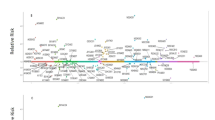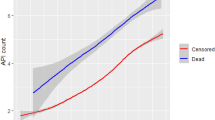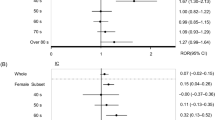Abstract
Valsartan is a second class of angiotensin II receptor antagonist, indicated for the treatment of hypertension. The objective of the study was to monitor the safety of valsartan using the technique of prescription event monitoring (PEM), in patients who were prescribed this drug by general practitioners (GPs) in England. PEM is a noninterventional observation cohort technique. Exposure data were obtained from dispensed prescriptions issued between December 1996 and November 1998. Outcome data were obtained by sending questionnaires to prescribing GPs. The cohort comprised 12 881 patients. Events most frequently reported as suspected adverse drug reactions were malaise/lassitude (37; 0.3% of total cohort), dizziness (19; 0.1%), and unspecified side effects (57; 0.4%). Events with the highest incidence density (ID1 per 1000 patient–months of treatment) in the first month of treatment were malaise/lassitude (15.6), dizziness (11.8), and headache/migraine (10.9). Most frequent reasons for stopping valsartan were not effective (847; 6.6% of total cohort), malaise/lassitude (265; 21%), and dizziness (146; 1.1%). No unexpected serious adverse events were identified. Other events assessed as possibly related to valsartan use were impotence (37), dizziness (19), cough (9), facial oedema (5), hyperkalaemia (3), and angioneurotic oedema (1). There were four reports of exposure during pregnancy and 203 deaths (1.5%) in this cohort. In conclusion, this study monitored the safety profile of valsartan in a large cohort of patients in general practice in England. No untoward features other than dizziness were identified that were not mentioned in the prescribing guidance.
This is a preview of subscription content, access via your institution
Access options
Subscribe to this journal
Receive 12 digital issues and online access to articles
$119.00 per year
only $9.92 per issue
Buy this article
- Purchase on Springer Link
- Instant access to full article PDF
Prices may be subject to local taxes which are calculated during checkout

Similar content being viewed by others
References
Rawlins MD, Jefferys DB . United Kingdom product license applications involving new active substances, 1987–1989: their fate after appeals Br J Clin Pharmacol 1993 35: 599–602
Ramsay LE, Yeo WW . ACE inhibitors, angiotensin II antagonists and cough J Hum Hypertens 1995 9: (Suppl 5) 551–554
Lacourciere Y, Lefebvre J . Modulation of the renin–angiotensin–aldosterone system and cough Can J Cardiol 1995 11: (Suppl F) 33F–39F
Diovan Summary of Product Characteristics. Novartis 1996
Mann RD . Prescription Event Monitoring—recent progress and future horizons Br J Clin Pharmcol 1998 46: 195–201
WHO. International Ethical Guidelines for Biomedical Research Involving Human Subjects Geneva: CIOMS/WHO 1993
Guidelines on the practice of Ethical Committees in Medical Research involving Human Subjects. Royal College of Physicians of London August 1996
Multicentre Research Ethics Committee. Examples of enquiries and surveys in the public interest where no reference to a Research Ethics Committee is necessary Multi-Centre Research Ethics Committees Guidance Notes 2000 Appendix C: 19
Freemantle SN et al. The incidence of the most commonly reported events with 40 newly marketed drugs—study by Prescription-Event Monitoring Pharmacoepidemiol Drug Safety 1997 6: (Suppl 1) 1–8
Templeton L et al. Surveying general practitioners: does a low response rate matter? Br J Gen Pract 1997 47: 91–94
McAvoy BR, Kramer EFS . General practice postal surveys: a questionnaire too far? BMJ 1997 313: 732–733
Mann RD et al. Losartan: a study of pharmacovigilance data on 14 522 patients J Hum Hypertens 1999 13: 551–557
Mazzolai L, Burnier M . Comparative safety and tolerability of Angiotensin II receptor antagonists Drug Safety 1999 21: 23–33
Markham A, Goa KL . Valsartan: a review of its use in essential hypertension Drugs 1997 54: 299–311
Mackay FJ, Pearce GL, Mann RD . Cough and angiotensin II inhibitors: cause or confounding? Br J Clin Pharmacol 1999 47: 111–114
Benz J et al. Valsartan, a new angiotensin II receptor antagonist: a double blind study comparing the incidence of cough with lisinopril and hydrochlorothiazide J Clin Pharmacol 1997 37: 101–107
Israili ZH, Hall WD . Cough and angioneurotic oedema associated with angiotensin-converting enzyme inhibitor therapy: a review of the literature and pathophysiology Ann Intern Med 1992 117: 234–242
Heeley E et al. Prescription event monitoring and reporting of adverse drug reactions Lancet 2001 358: 1872–1873
Acknowledgements
We thank the very many GPs who have, without payment, participated in this study. We also thank the prescription pricing Authority, The office of the National Statistics, and the Regional Authorities of the NHS, without whose support PEM could not have been undertaken. Special thanks goes to Mrs. Gillian Pearce, Data Processing Manager, Mr. Shayne Freemantle, IT Manager for providing the data required for this study, and Mrs. Lesley Flowers for typing the manuscript. The DSRU is a medical charity, which has received unconditional grants from many pharmaceutical companies, including the manufacturer of valsartan. The organisations have no control over the decision to undertake a study, or the conduct and reporting of the studies.
Author information
Authors and Affiliations
Corresponding author
Rights and permissions
About this article
Cite this article
Biswas, P., Wilton, L. & Shakir, S. The safety of valsartan: results of a postmarketing surveillance study on 12 881 patients in England. J Hum Hypertens 16, 795–803 (2002). https://doi.org/10.1038/sj.jhh.1001490
Received:
Accepted:
Published:
Issue Date:
DOI: https://doi.org/10.1038/sj.jhh.1001490
Keywords
This article is cited by
-
Outcomes of 83 fetuses exposed to angiotensin receptor blockers during the second or third trimesters: a literature review
Hypertension Research (2015)
-
Distinct effects of fixed combinations of valsartan with either amlodipine or hydrochlorothiazide on lipoprotein subfraction profile in patients with hypertension
Journal of Human Hypertension (2013)
-
Blood pressure control rates with an antihypertensive regimen including trandolapril in a canadian usual-care setting
Advances in Therapy (2011)



